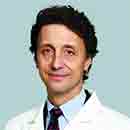The Air Up There
Airplane air quality is generally regarded as good, comparable to or better than other indoor environments thanks to high air exchange rates and the use of high-efficiency particulate air filters. But any air traveler will tell you that flying seems to provoke a particular kind of air turbulence. Namely, increased flatulence.
It's a matter of altitude, not attitude. At ground level, the gas buildup in our intestines produced by the digestion process is under approximately 14 pounds per square inch. At that pressure, most people average 12 farts per day.
Airplanes in operation have much lower pressures. At just 7,000 feet above sea level, plane cabins are pressurized at 11 PSI. The lower the air pressure, the more gases can expand. This is why your ears pop and your flatulence production increases.
There's really no way to avoid it. In fact, everybody around you is dealing with the same challenge. To reduce your chances of a fart pas, avoid eating gas-producing foods like beans and cabbage and consuming carbonated drinks before and during flying. Foods with low fiber content, such as bananas, eggs and white rice also produce less gas. Eating slowly helps too, but that's a given with most airline food.
Hen's Teeth
As a matter of evolutionary fact, chicken do not have teeth (though the genetic code for them still lingers). As a matter of dubious fact, there is such a thing as Kentucky Fried Chicken toothpaste, which debuted on April 1 (no fooling) at $13 per 2.1-ounce tube.
The toothpaste reportedly tastes like a piece of KFC Original Recipe, "coating your teeth in flavor while leaving your mouth feeling fresh and clean." That's quite a promise, if not an oxymoron.
Promotional materials say nothing on the other health aspects of the toothpaste, such as calorie count. A single KFC drumstick contains 179 calories: 54% fat, 9% carbs and 37% protein. No word on whether the toothpaste is equally, um, filling.
The limited production run of the toothpaste has reportedly already sold out. You might have better luck finding a chicken with teeth.
Body of Knowledge
The average duration of a single blink of the human eye is 0.3 seconds. The average person blinks 25 times per minute: roughly 28,800 times per day or about 10,512,000 times per year. That works out to be over seven years of the average person's lifespan briefly staring at the back of their eyelids.
Mark Your Calendar
May is awareness month for arthritis, hepatitis, lupus, celiac disease, osteoporosis, stroke, skin cancer, cystic fibrosis, mental health and older Americans, who may have many of these conditions of which they are acutely aware.
Doc Talk
Distal pulse: The pulse farthest from the heart
Phobia of the Week
Linonophobia: Fear of string
Best Medicine
Sam visits his doctor for his annual physical.
"Everything looks good," declares Sam's doctor. "You're doing OK for your age."
"For my age?" exclaims Sam. "I'm only 75. I want to know if I'll make 80."
"Well," replies the doctor, "do you drink or smoke?"
"No," says Sam.
"Do you eat fatty meats or sweets?"
"No."
"What about activities? Do you engage in thrilling behaviors like racing cars or skiing?"
"Absolutely not," says Sam. "I would never engage in dangerously thrilling activities."
"In that case," the doctor says, "why would you want to live to be 80?"
Observation
"When I'm not in my right mind, my left mind gets pretty crowded." -- American comedian Steven Wright
Medical History
This week in 1980, the world was declared free of the deadly disease of smallpox at the World Health Assembly. The global eradication of smallpox is considered one of the biggest achievements in international public health. The last person to die of smallpox was Janet Parker on Sept. 11, 1978. Parker worked as a medical photographer one floor below a lab where research was being carried out on the smallpox virus. Since then, the number of laboratories holding stock of the virus has been reduced to two highly secure locations in the U.S. and Russia.
Ig Nobel Apprised
The Ig Nobel Prizes celebrate achievements that make people laugh, then think. A look at real science that's hard to take seriously and even harder to ignore.
In 1996, the Ig Nobel Prize in economics went to Robert J. Genco of the University of Buffalo for his discovery that "financial strain is a risk indicator for destructive periodontal disease."
Yep, recessions are hard to swallow.
Sum Body
Five medical innovations from the Civil War:
1. Life-saving amputation, mostly by turning complex injuries into simpler ones.
2. Anesthesia inhaler. Think chloroform-soaked cloth over the nose.
3. Closing chest wounds, which prevented almost always fatal lung collapse.
4. Facial reconstruction surgery.
5. Ambulance-to-ER system.
Medical Myths
It's a common notion that ginger ale is a handy remedy for bellyaches. Well, natural ginger may be: It can help alleviate nausea and aid digestion. But most commercial ginger ale beverages do not contain any actual ginger, just artificial flavorings. And those packing a lot of sugar can further upset the stomach.
Last Words
"Now why did I do that?" -- English Major-General William Erskine (1770-1813) after jumping from the window of a tall building in Lisbon, Portugal. Erskine had been cashiered earlier from the military after being declared insane.
========
To find out more about Scott LaFee and read features by other Creators Syndicate writers and cartoonists, visit the Creators Syndicate website at www.creators.com.
Copyright 2025 Creators Syndicate Inc.









Comments